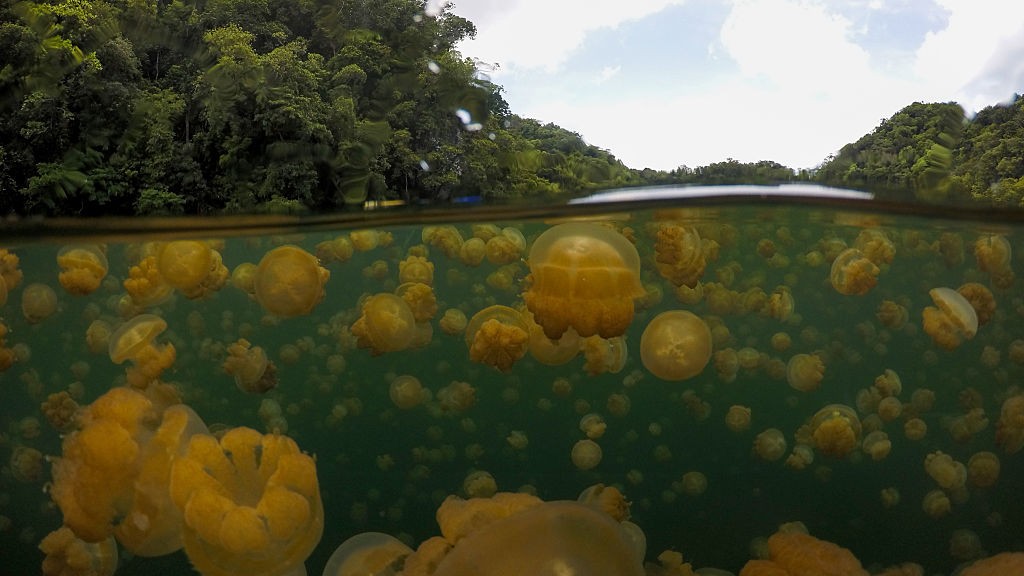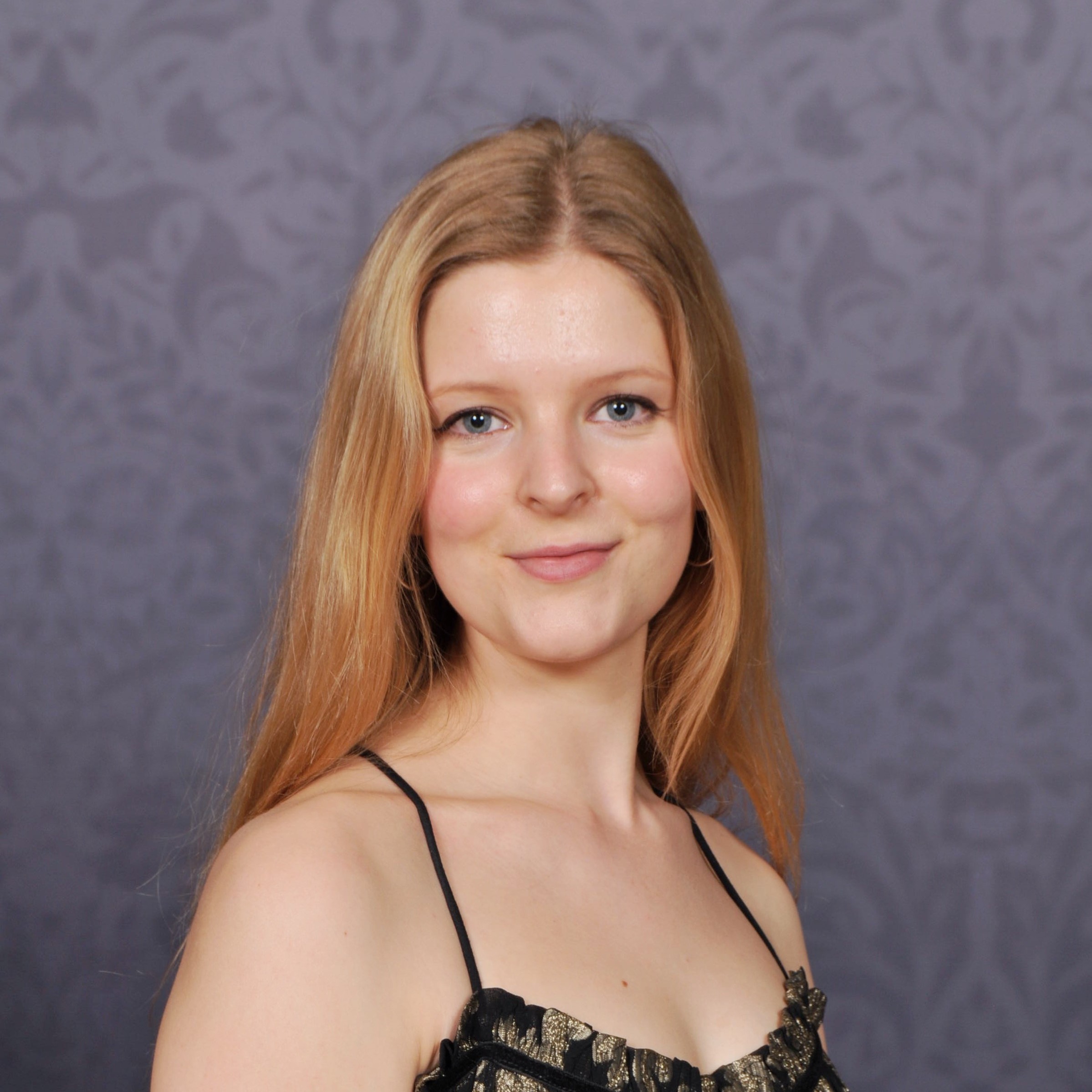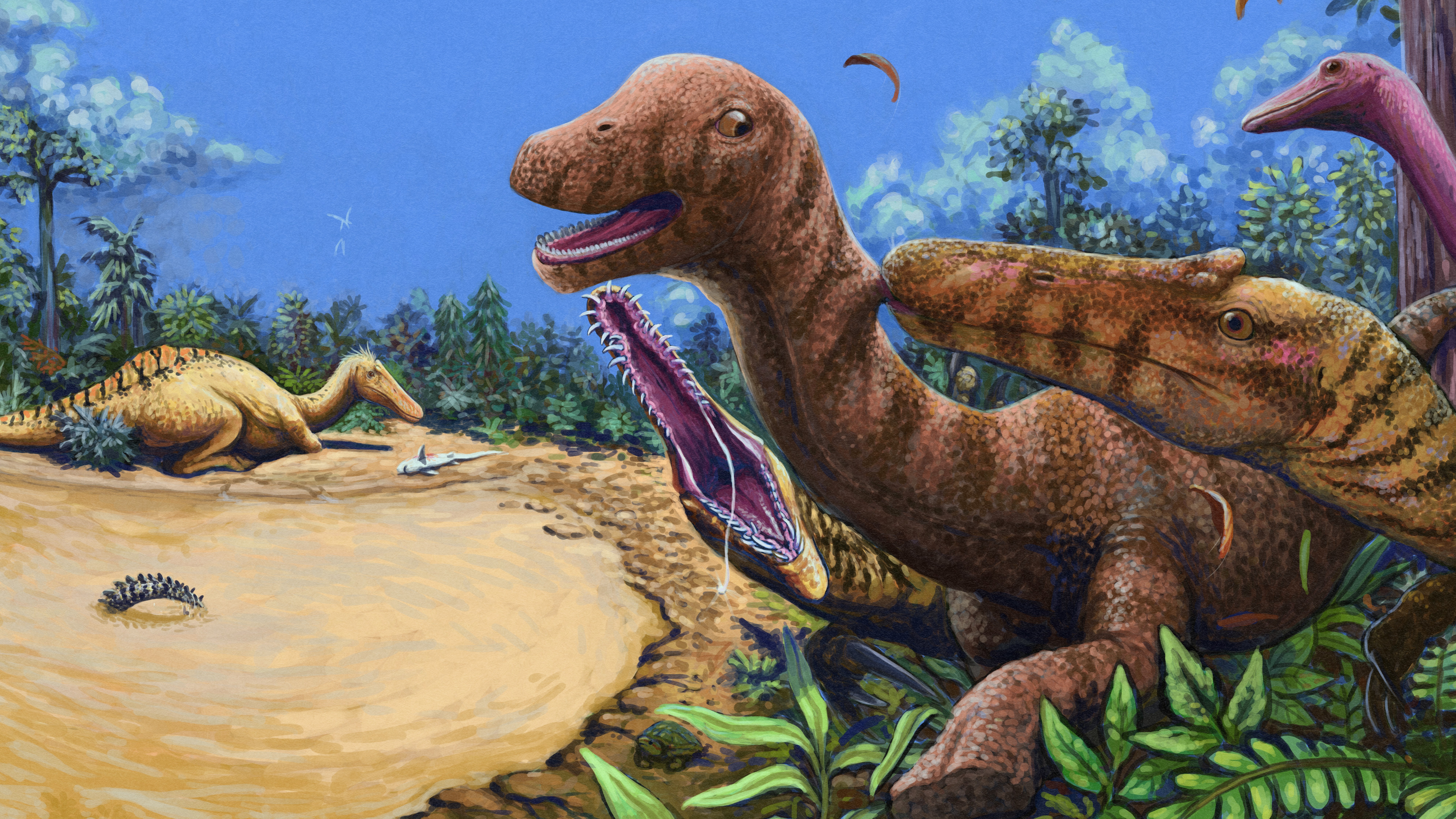Jellyfish Lake: Palau's saltwater pool with a toxic bottom and surface waters brimming with millions of jellyfish
Palau's Jellyfish Lake is home to millions of endemic golden jellies that live in the lake's top layer but never venture below 50 feet, where the water is saturated with poisonous gas.

Name: Jellyfish Lake, or "Ongeim’l Tketau" in Palauan
Location: Palau, Western Pacific
Coordinates: 7.161200817499221, 134.37633688402798
Why it's incredible: The lake has three layers, including one inhabited by millions of jellyfish and another containing poisonous gas.
Jellyfish Lake is a pool of saltwater on Eil Malk island in Palau that is brimming with golden jellyfish — a subspecies not found anywhere else on Earth. The lake typically houses around 5 million jellyfish, according to the Coral Reef Research Foundation (CRRF) — although there have been years, including 2005, when the number of jellies exceeded 30 million.
Jellyfish Lake is highly stratified, meaning it is separated into distinct layers. Golden jellyfish inhabit the top layer, which extends from the surface down to about 43 feet (13 meters) deep. Between 43 and 50 feet (13 to 15 m) deep, the lake contains pink bacteria that prevents light and oxygen from reaching the bottom layer of the lake, which sits between 50 and 100 feet (15 to 30 m) deep.
The lake is connected to the ocean through small cracks in Eil Malk's limestone rock, but it is nevertheless considered an isolated ecosystem, according to CRRF learning resources. Jellyfish Lake formed toward the end of the last ice age, roughly 12,000 years ago, due to ice melt and sea level rise. Sea water filled depressions in Palau's islands and elsewhere, creating three types of lakes: stratified lakes, such as Jellyfish Lake; mixed lakes, which are connected to the ocean via large tunnels; and transitional lakes, which are also connected to the ocean, but via smaller tunnels.
Jellyfish Lake's pink layer exists because the conditions in that layer suit a type of bacteria that are pink in color. These bacteria create a barrier between the lake's oxygenated top layer and its oxygen-free bottom layer. This barrier bobs up and down depending on density changes in the water.
The lack of oxygen beneath the pink layer is deadly for most life. What's more, plant and animal decomposition at the bottom of Jellyfish Lake releases poisonous hydrogen sulfide gas, which means only certain microbes can survive there, according to the CRRF.
Jellyfish Lake's endemic golden jellyfish (Mastigias papua etpisoni) population likely evolved from a handful of spotted jellyfish (Mastigias papua) that became trapped when sea levels dropped following the lake's formation. Unique conditions inside the lake forced the jellies to adapt, leading to a new subspecies, which is named after Palau's former president, Ngiratkel Etpison.
Get the world’s most fascinating discoveries delivered straight to your inbox.

Golden jellyfish have a symbiotic relationship with single-celled, photosynthetic algae that give them nutrients in exchange for a place to live. The jellyfish follow an unusual migration pattern that involves swimming towards the sun as it rises and sets, always avoiding the lake's edges where jellyfish-eating sea anemones (Entacmaea medusivora) lurk. These predatory anemones prefer the shadows, so golden jellyfish have evolved to stay in sunlit waters. Every morning, the jellies crowd along the lake's eastern shadow line, and visitors may occasionally see a "wall" of jellyfish forming underwater, according to the CRRF.
While golden jellyfish have stinging cells, the sting is so mild that humans can't feel it. Visitors can safely swim in Jellyfish Lake, but people should take care not to accidentally introduce non-native species to the lake, as these can, and already do, endanger the fragile ecosystem, according to the CRRF.
Discover more incredible places, where we highlight the fantastic history and science behind some of the most dramatic landscapes on Earth.

Sascha is a U.K.-based staff writer at Live Science. She holds a bachelor’s degree in biology from the University of Southampton in England and a master’s degree in science communication from Imperial College London. Her work has appeared in The Guardian and the health website Zoe. Besides writing, she enjoys playing tennis, bread-making and browsing second-hand shops for hidden gems.
You must confirm your public display name before commenting
Please logout and then login again, you will then be prompted to enter your display name.


